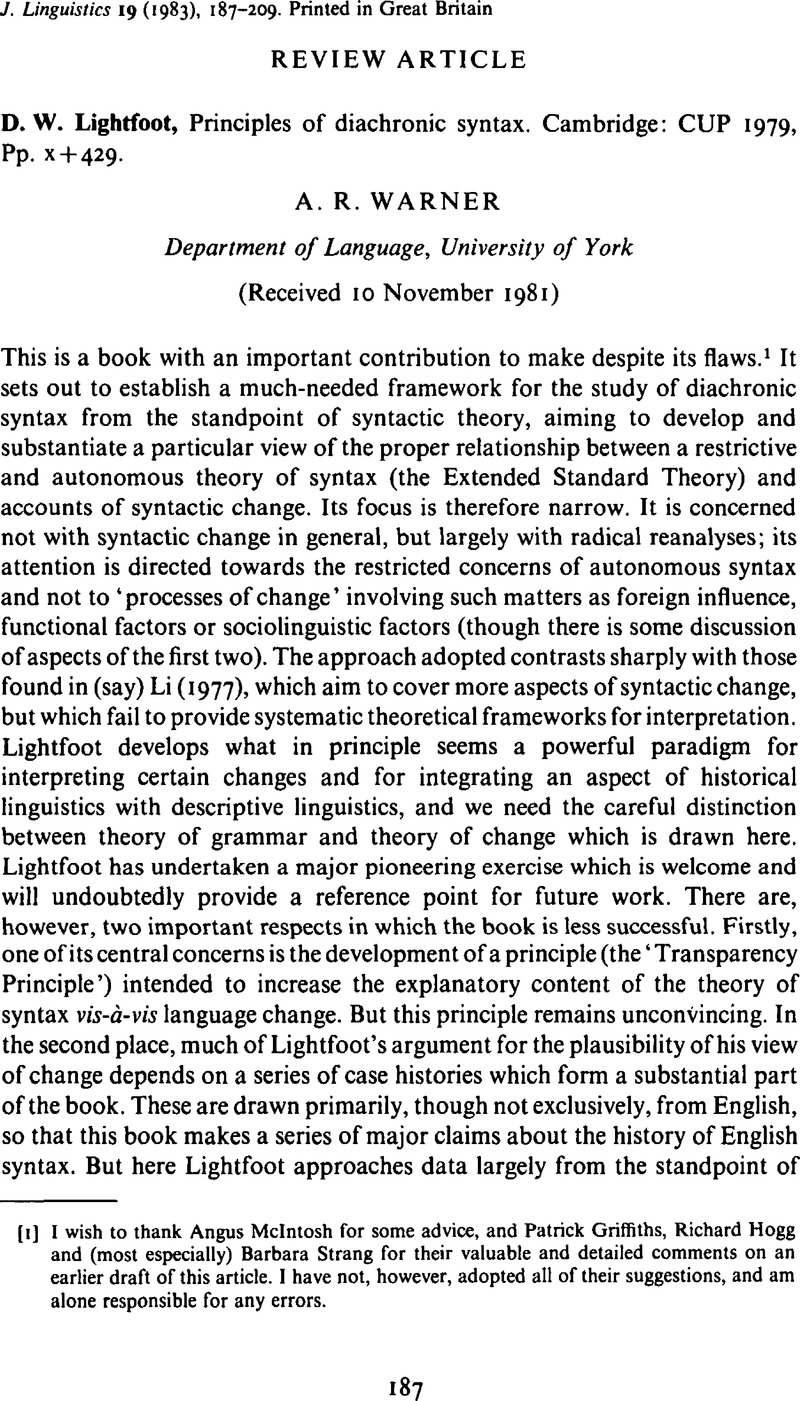Crossref Citations
This article has been cited by the following publications. This list is generated based on data provided by Crossref.
Snow, Catherine E.
and
Tomasello, Michael
1989.
Data on language input: Incomprehensible omission indeed!.
Behavioral and Brain Sciences,
Vol. 12,
Issue. 2,
p.
357.
Haider, Hubert
1989.
Language acquisition: What triggers what?.
Behavioral and Brain Sciences,
Vol. 12,
Issue. 2,
p.
343.
Wasow, Thomas
1989.
Why degree-0?.
Behavioral and Brain Sciences,
Vol. 12,
Issue. 2,
p.
361.
Kroch, Anthony S.
1989.
Reflexes of grammar in patterns of language change.
Language Variation and Change,
Vol. 1,
Issue. 3,
p.
199.
Stabler, Edward P.
1989.
What's a trigger?.
Behavioral and Brain Sciences,
Vol. 12,
Issue. 2,
p.
358.
Neale, Stephen
1989.
Ononeas an anaphor.
Behavioral and Brain Sciences,
Vol. 12,
Issue. 2,
p.
353.
Vincent, Nigel
1989.
Observing obsolescence.
Behavioral and Brain Sciences,
Vol. 12,
Issue. 2,
p.
360.
Koster, Jan
1989.
Does Universal Grammar exist?.
Behavioral and Brain Sciences,
Vol. 12,
Issue. 2,
p.
347.
Morgan, James L.
1989.
Learnability considerations and the nature of trigger experiences in language acquisition.
Behavioral and Brain Sciences,
Vol. 12,
Issue. 2,
p.
352.
Lightfoot, David W.
1989.
Newton to Aristotle.
p.
245.
Grimshaw, Allen D.
1989.
Infinitely nested Chinese “black boxes”: Linguists and the search for Universal (innate) Grammar.
Behavioral and Brain Sciences,
Vol. 12,
Issue. 2,
p.
339.
Lasnik, Howard
1989.
The nature of triggering data.
Behavioral and Brain Sciences,
Vol. 12,
Issue. 2,
p.
349.
Cinque, Guglielmo
1989.
Parameter setting in “instantaneous” and real-time acquisition.
Behavioral and Brain Sciences,
Vol. 12,
Issue. 2,
p.
336.
Rizzi, Luigi
1989.
On the format for parameters.
Behavioral and Brain Sciences,
Vol. 12,
Issue. 2,
p.
355.
O'Grady, William
1989.
Two perspectives on learnability.
Behavioral and Brain Sciences,
Vol. 12,
Issue. 2,
p.
354.
Freidin, Robin
and
Quicoli, A. Carlos
1989.
Zero-stimulation for parameter setting.
Behavioral and Brain Sciences,
Vol. 12,
Issue. 2,
p.
338.
Wilkins, Wendy
1989.
Why degree-0?.
Behavioral and Brain Sciences,
Vol. 12,
Issue. 2,
p.
362.
Schlesinger, I. M.
1989.
Language acquisition: Dubious assumptions and a specious explanatory principle.
Behavioral and Brain Sciences,
Vol. 12,
Issue. 2,
p.
355.
McCawley, James D.
1989.
INFL', Spec, and other fabulous beasts.
Behavioral and Brain Sciences,
Vol. 12,
Issue. 2,
p.
350.
Clark, Robin
1989.
Causality and parameter setting.
Behavioral and Brain Sciences,
Vol. 12,
Issue. 2,
p.
337.



